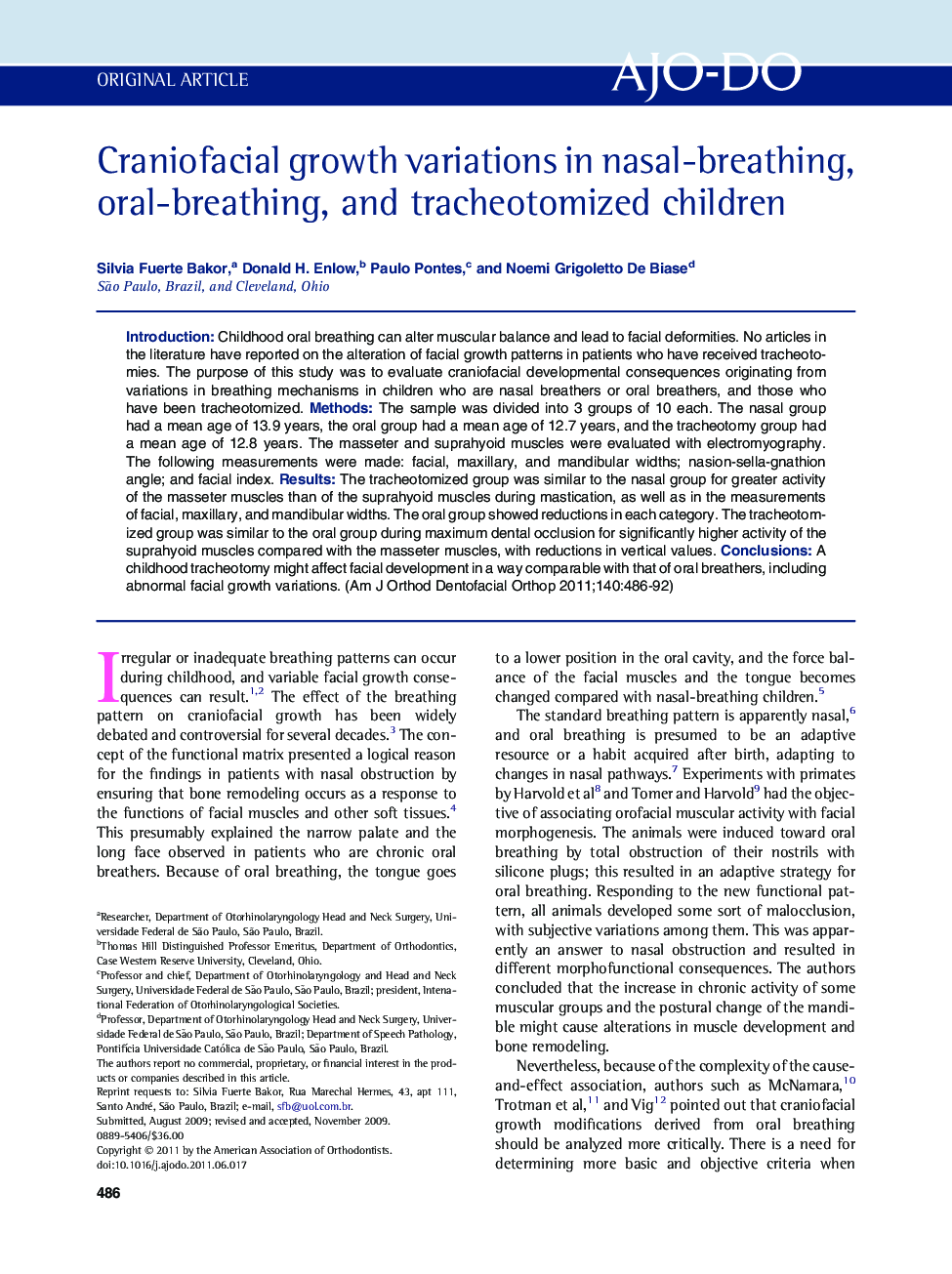| Article ID | Journal | Published Year | Pages | File Type |
|---|---|---|---|---|
| 3118195 | American Journal of Orthodontics and Dentofacial Orthopedics | 2011 | 7 Pages |
IntroductionChildhood oral breathing can alter muscular balance and lead to facial deformities. No articles in the literature have reported on the alteration of facial growth patterns in patients who have received tracheotomies. The purpose of this study was to evaluate craniofacial developmental consequences originating from variations in breathing mechanisms in children who are nasal breathers or oral breathers, and those who have been tracheotomized.MethodsThe sample was divided into 3 groups of 10 each. The nasal group had a mean age of 13.9 years, the oral group had a mean age of 12.7 years, and the tracheotomy group had a mean age of 12.8 years. The masseter and suprahyoid muscles were evaluated with electromyography. The following measurements were made: facial, maxillary, and mandibular widths; nasion-sella-gnathion angle; and facial index.ResultsThe tracheotomized group was similar to the nasal group for greater activity of the masseter muscles than of the suprahyoid muscles during mastication, as well as in the measurements of facial, maxillary, and mandibular widths. The oral group showed reductions in each category. The tracheotomized group was similar to the oral group during maximum dental occlusion for significantly higher activity of the suprahyoid muscles compared with the masseter muscles, with reductions in vertical values.ConclusionsA childhood tracheotomy might affect facial development in a way comparable with that of oral breathers, including abnormal facial growth variations.
